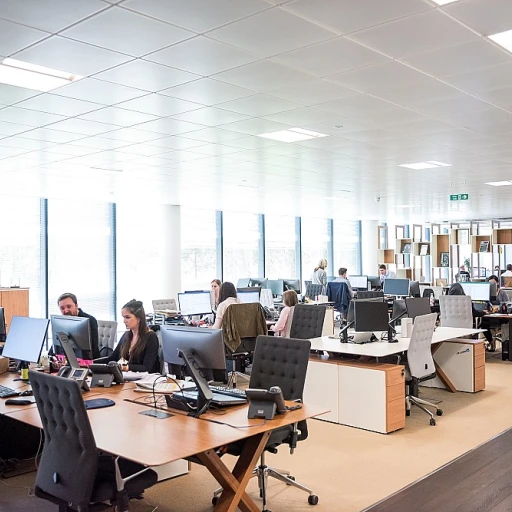
Understanding the Importance of Rewards in a Clinic
The Significance of Reward Systems in Clinical Environments
Recognizing and rewarding healthcare workers in a clinical setting is crucial not just for maintaining morale, but for improving overall patient care and outcomes. In a high-stress environment such as a hospital or ambulatory care center, healthcare professionals often go above and beyond in their roles. Therefore, it's important to ensure that their hard work does not go unnoticed. Implementing an effective recognition program can make employees feel valued and appreciated, which in turn enhances employee engagement and motivation. When team members perceive their contributions are recognized, it positively impacts their performance, which is directly related to improved patient care and operational efficiency. The right approach to rewards can also foster better team dynamics. When an entire care team is recognized for their collective efforts, it encourages a sense of mutual support and collaboration among team members. Moreover, understanding the reward preferences of staff members can help in designing recognition strategies that are both impactful and appreciated. Recognition does not only come in forms of monetary compensation but also includes non-monetary rewards such as public recognition or peer recognition. These strategies can be particularly effective in the healthcare setting where teamwork and support are integral to the organizational culture. Further enhancing the reward system involves exploring unique recognition ideas that cater to the needs of diverse healthcare workers. Whether through a gift card or a public acknowledgment of a job well done, every small gesture counts in making a significant difference in morale and engagement. Ultimately, establishing a structured and thoughtful approach to employee recognition is a strategic move that benefits both the staff and the organization. For more ways to keep the morale high among healthcare teams, check out this inspiring Tuesday boost for your workday.Identifying Reward Preferences Among Clinical Staff
Recognizing Individual Preferences
Understanding what motivates your healthcare staff is a crucial step in ensuring an effective recognition program. Each team member, from the busy hospital surgeons to the diligent ambulatory care providers, may have unique preferences when it comes to how they feel appreciated. Recognizing individual reward preferences can significantly enhance employee engagement. You might discover that some healthcare workers appreciate public recognition to boost their morale and make their hard work visible. Others may prefer a more personal gesture, such as a thoughtful note or a gift card to their favorite store. By taking the time to identify these preferences, you can tailor your approach to meet the diverse needs of your healthcare team.Conducting Feedback Sessions
One effective way to ascertain these preferences is through feedback sessions. Engaging the healthcare professionals in open discussions about what makes them feel valued can lead to insightful revelations. This process should be a two-way street—inviting staff to express their opinions on current recognition strategies, while also presenting them with new recognition ideas to consider. A simple survey can also serve as a useful tool. It allows employees to communicate anonymously, encouraging honesty and openness. This approach ensures your healthcare staff feels heard and appreciated, fostering a culture of employee recognition within your organization.Considering Peer Recognition
Peer recognition can play an essential role in a clinic’s recognition framework. Encouraging team members to acknowledge the achievements of their colleagues not only enhances the work environment but also strengthens bonds within the team. This recognition style promotes a more integrated care team, leading to improved patient care outcomes and heightened morale throughout the group. For more insights on how employee recognition can positively influence organizational culture, you may find inspiration in this blog post. It provides tips on boosting workplace motivation and morale, essential components of a successful rewards system in the healthcare industry.Monetary vs. Non-Monetary Rewards
Balancing Financial and Non-Financial Incentives
In a clinical setting, finding the right balance between monetary and non-monetary rewards is crucial for enhancing employee recognition and acknowledging the hard work of healthcare professionals. While cash bonuses and salary increases can be motivating, they are not the only way to recognize a healthcare worker's contribution. Non-monetary rewards can be equally powerful, fostering a sense of belonging and motivation within healthcare teams. Healthcare staff, such as those in hospitals, ambulatory care centers, or any healthcare organization, often appreciate non-monetary recognition strategies. Public recognition, for example, can greatly enhance employee engagement. A simple announcement in a staff meeting or a feature in the organization's newsletter can make employees feel valued and appreciated. Peer recognition is another effective tool, enabling team members to acknowledge each other’s performance. This can be facilitated through employee recognition platforms or peer nomination processes that celebrate exceptional patient care or teamwork. Gift cards are a flexible reward option that can serve as both a monetary and non-monetary incentive. They allow staff members to choose their preferred way of enjoying their reward, catering to diverse interests and needs. Implementing such multifaceted recognition ideas not only improves individual and team performance but also positively impacts patient care outcomes. Crafting a rewards system that successfully combines these varied approaches requires a keen understanding of healthcare workers' preferences, further detailed in previous sections. You can find more insights on effective communication strategies by visiting our dedicated resource on enhancing communication.Implementing a Recognition Program
Establishing a Rewarding Atmosphere
In a clinical setting, implementing a recognition program is vital to reinforcing positive work outcomes and fostering a thriving healthcare environment. By creating a rewarding atmosphere where employee recognition is part of the organizational culture, clinical staff can feel valued and motivated, which can lead to improved patient care and team performance. A well-structured recognition program can significantly enhance employee engagement. It's essential for healthcare organizations to develop a comprehensive strategy that includes both formal and informal recognition. Here's how hospitals and clinics can effectively implement these programs:- Diverse Recognition Options: Incorporate a mix of monetary and non-monetary rewards, allowing the staff to personalize their approach. Gift cards, peer recognition, or public recognition at team meetings can cater to different preferences, motivating a wide array of healthcare professionals.
- Measurable Outcomes: Regularly assess the impact of the recognition system on team performance and patient care. Establish key performance indicators (KPIs) to track progress and identify areas for enhancement.
- Inclusive Participation: Encourage all staff members to participate in the recognition process. Whether it is through nominating colleagues for their hard work or providing feedback on the reward system, inclusivity will ensure broader engagement and appreciation across the care team.
- Sustained Motivation: For recognition programs to be successful, they must be sustained over time. Regularly update recognition ideas to keep them fresh and relevant, enhancing their impact on healthcare workers and hospital outcomes.
Leveraging Technology for Reward Systems
Harnessing Digital Tools for Enhanced Recognition
In our modern and fast-paced healthcare environment, leveraging technology can play a pivotal role in streamlining reward systems and bolstering employee recognition efforts. Hospitals and healthcare organizations are increasingly adopting digital platforms to ensure that their recognition efforts are timely, consistent, and impactful. Technology provides diverse avenues to recognize healthcare workers for their outstanding performance and dedication to patient care. Here are some key ways that technology can be employed:- Digital Badges and E-Certificates: These are easy-to-distribute rewards that can be awarded for milestones or exceptional performances, providing staff members with visible recognition they can share proudly within their professional networks.
- Online Peer Recognition Systems: Such systems empower employees to nominate and recognize their colleagues in real time, fostering a supportive and appreciative work culture. Peer recognition strengthens group cohesion, reinforcing the value of teamwork.
- Recognition Platforms: Integrated platforms centralize various recognition activities, enabling healthcare staff to receive accolades and rewards efficiently. These platforms can track employee engagement, facilitating management in tailor-fitting recognition strategies based on feedback and participation rates.
- Intranet Communication Modules: Using hospital intranet for sharing success stories and broadcasting public recognition of team members can bolster morale and encourage a culture of appreciation. Recognizing teams' accomplishments contributes to improved organizational outcomes.
Evaluating the Impact of Reward Systems
Measuring the Success of Reward Systems
Evaluating the impact of reward systems in a clinical setting is crucial for ensuring that the efforts put into recognizing and rewarding healthcare professionals are effective. It's not just about handing out rewards; it's about understanding how these rewards influence the work environment and patient care outcomes.
To start, organizations should establish clear metrics to measure the success of their recognition programs. These metrics might include employee engagement scores, staff retention rates, and patient satisfaction levels. By regularly assessing these areas, healthcare providers can determine whether their reward strategies are positively impacting the care team and the overall health of the organization.
Feedback from Healthcare Staff
Gathering feedback from healthcare staff is another essential step in evaluating reward systems. Employees should feel encouraged to share their thoughts on the recognition programs in place. This feedback can provide valuable insights into what is working and what might need adjustment. Regular surveys or focus groups can be effective methods for collecting this information.
Analyzing Performance and Outcomes
Another aspect to consider is the correlation between rewards and performance. Organizations should analyze whether there is a noticeable improvement in team performance and patient care following the implementation of a recognition program. This analysis can help identify successful strategies and highlight areas for improvement.
Adjusting Strategies for Better Results
Finally, it's important to remain flexible and willing to adjust recognition strategies based on the evaluation results. If certain rewards are not resonating with staff members or if the desired outcomes are not being achieved, organizations should be open to exploring new recognition ideas. This adaptability ensures that the reward system remains relevant and effective in motivating healthcare workers.
In conclusion, evaluating the impact of reward systems is an ongoing process that requires attention to detail and a commitment to continuous improvement. By focusing on metrics, gathering feedback, and analyzing outcomes, healthcare organizations can create a rewarding environment that supports both employee satisfaction and patient care excellence.












